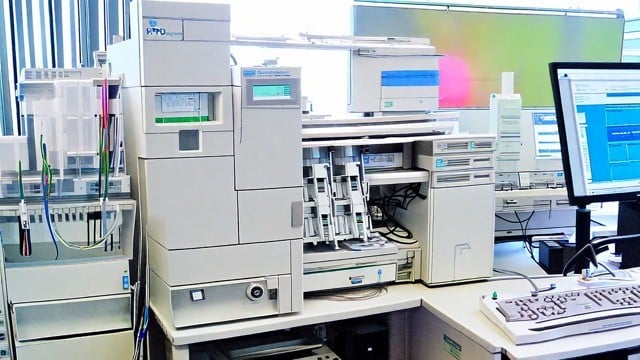Advancements in LC-MS Technology: Transforming Pharmaceutical Analysis
Introduction
Liquid Chromatography-Mass Spectrometry (LC-MS or LC/MS or LCMS) is an indispensable technology in the realm of pharmaceutical analysis. It serves as a critical tool for detecting and quantifying various types of impurities in drug formulations. As the pharmaceutical industry continues to evolve, the demand for more advanced LC-MS technologies is escalating. This article delves into the advancements in LC-MS technology and how they are revolutionizing pharmaceutical analysis.
What is LC-MS?
Basic Principles
- LC-MS is a hybrid analytical technique.
- Combines the separation capabilities of Liquid Chromatography (LC).
- Merges with the quantitative and qualitative prowess of Mass Spectrometry (MS).
Together, they offer a robust solution for analyzing complex mixtures in pharmaceutical products.
Applications in Pharmaceutical Analysis
LC-MS is not just a tool but a comprehensive solution for various challenges in pharmaceutical research and development. It provides a robust, reliable, and versatile platform for scientists to obtain critical data at every stage of drug development. Liquid Chromatography-Mass Spectrometry (LC/MS) is an indispensable tool in the pharmaceutical industry, offering a wide range of applications from drug discovery to market support. It plays a crucial role in various developmental stages, providing vital information for drug compound discovery, chemical development, stability testing, and more. For instance, LC/MS is employed for fast monitoring of target compounds during the discovery phase and for structural verification during chemical development. It is also essential for monitoring impurity profiles, which is a key aspect of pharmaceutical standards and impurity profiling.
Table: LC-MS Applications Across Development Stages in Pharmaceuticals
| Drug Development Stages | LC/MS Applications |
| Discovery of Drug Candidate | (1) Fast LC/MS for monitoring of target drug candidates(2) High-resolution mass spectrometry for structural proof
(3) In vitro pharmacokinetic and metabolic investigations |
| Chemical Drug Development and Scale-up | (4) Structural confirmation of starting materials, intermediates, and final drug candidates(5) Monitoring of impurity profiles from batch to batch
(6) Characterization and qualification of drug substance/synthetic impurities as reference standards |
| Stability Testing | (7) Monitoring of variations in purity and impurity profiles(8) Analysis of compatibility between drug compounds, formulation excipients, and packaging materials
(9) Analyzation of intrinsic stability and degradation pathways (10) Examining of chromatographic peak purity (11) Establishing impurity profiles under a stressed environment |
| Drug Metabolism, Pharmacokinetic, and Toxicological Studies | (12) Identification of drug metabolites under physiological conditions(13) Quantitation of drug substance and metabolites in biological matrix |
| Product Support after sales/market | (14) Monitoring of impurity profiles throughout the course of the study(15) Continuous examination of impurity profiles on drug products and substances under long-term storage conditions
(16) Inspection of consumer complaint samples (16) Investigation of counterfeit drug products |
Case Studies
For instance, LC-MS has been instrumental in the analysis of Dapagliflozin Impurities and Isavuconazole Impurities. These case studies demonstrate the technology’s capability to identify and quantify even trace levels of impurities, ensuring the safety and efficacy of pharmaceutical products.
Historical Perspective
The journey of LC-MS technology has been nothing short of transformative. From its initial applications in basic research to its current indispensable role in pharmaceutical analysis, the technology has come a long way.
Evolution Timeline
| Year | Milestone |
|---|---|
| 1980s | Initial Applications in Academic Research |
| 1990s | Adoption by Pharmaceutical Companies |
| 2000s | Widespread Use in Impurity Identification |
| 2010s | Advanced Hardware and Software Upgrades |
In the early days, LC-MS was primarily used for academic research. However, its potential was soon recognized by pharmaceutical companies, leading to its widespread adoption for various applications, including Process Impurities identification and Impurity Profiling.
Recent Advancements in LC-MS
Liquid Chromatography-Mass Spectrometry (LC-MS) is a powerful analytical technique that has seen significant advancements in recent years. This technology is crucial for various sectors, including pharmaceuticals.
Hardware Improvements
- Enhanced ionization techniques
- More sensitive detectors
- Increased system efficiency
These hardware improvements have made it possible to detect impurities at even lower concentrations, thereby enhancing the quality of pharmaceutical products.
The Significance of Ionization in LC-MS
Traditional Ionization Methods
The ionization source is the heart of an LC-MS system. It’s where the magic begins, transforming compounds into ions that can be separated and analyzed. Let’s look at the traditional ionization methods:
- Electrospray Ionization (ESI): This method is the Swiss Army knife of ionization methods—versatile and reliable. It is particularly useful for analyzing thermally labile, nonvolatile, and polar compounds.
- Atmospheric Pressure Chemical Ionization (APCI): APCI is the strong, silent type that gets the job done without much fuss. It is the method of choice for nonpolar or less polar compounds with lower molecular weights.
- Atmospheric Pressure Photo-Ionization (APPI): Though not as commonly used as ESI and APCI, APPI has its applications. Its primary limitation is its lower sensitivity compared to the other methods.
The New Wave of Ionization Techniques
Innovation never stops, and ionization methods are no exception. Here are some of the new technologies on the block:
- UniSpray: Introduced by Waters Corporation, UniSpray benefits from Coanda and vortex effects, which promote droplet break-up and desolvation. It’s like ESI, but on steroids.
- Electrospray Ionization Inlet (ESII): This innovative method applies a voltage to a metal union that connects tubing from a solvent delivery system to a piece of fused silica tubing inserted into the heated inlet tube of a mass spectrometer. It’s like the Tesla of ionization methods—innovative and efficient.
Addressing the Elephant in the Room: Matrix Effects
Matrix effects can strongly impact the reproducibility, linearity, and accuracy of LC-MS methods. Strategies to minimize these effects include:
- Use of multimode ionization sources
- Optimization of nebulizer pressures
- Selection of appropriate ionization methods
Multi-Modal Analysis
The integration of multiple analytical techniques into a single LC-MS system is another leap forward. This multi-modal analysis allows for more comprehensive data collection, which is crucial for complex tasks like the identification of unknown impurities.
Enhanced Sensitivity and Resolution
One of the most notable advancements in LC-MS is the improvement in sensitivity and resolution. Newer models are capable of detecting even trace amounts of compounds, which is particularly useful for identifying Unknown Impurities and Potential Impurities.
High Throughput Analysis
The need for high-throughput analysis in research labs and pharmaceutical companies has led to the development of faster LC-MS systems. These advancements significantly reduce the time required for sample preparation and analysis.
| Traditional LC-MS | Advanced LC-MS |
|---|---|
| Longer Run Time | Shorter Run Time |
| Manual Calibration | Auto-Calibration |
| Limited Throughput | High Throughput |
Software Enhancements
Modern LC-MS systems come with advanced software that offers features like real-time data analysis, automation, and cloud storage.
- Advanced algorithms for complex data sets
- Easier interpretation of results
Methodological Innovations
- Faster chromatographic techniques
- Improved sample preparation methods
The Future of LC-MS in Pharmaceuticals
The advancements in LC-MS technology indicate a bright future for its applications in pharmaceuticals. Whether it’s Impurity Profiling or custom synthesis, LC-MS is becoming an indispensable tool. The technology is also finding new applications in the early stages of drug discovery, offering pharmaceutical companies a competitive edge.
Regulatory Compliance and Quality Control
One of the most critical aspects that often get overlooked is the role of LC-MS in meeting regulatory requirements. Pharmaceutical companies are under constant scrutiny to ensure that their products meet the stringent guidelines set by regulatory bodies like the FDA and EMA. LC-MS plays a vital role in this, offering precise and accurate data that can be used for regulatory submissions.
Role in Impurity Profiling
LC-MS is particularly useful in the identification of Process Impurities. The technology allows for the accurate quantification of these impurities, ensuring that pharmaceutical products meet the required safety standards.
The Economic Impact of LC-MS
The economic implications of LC-MS technology are profound. By offering faster and more accurate analysis, LC-MS reduces the time and cost involved in drug development. This, in turn, can lead to quicker approvals and faster time-to-market, providing a competitive edge to pharmaceutical companies.
Cost-Benefit Analysis
- Reduced time for analysis
- Lower costs for drug development
- Faster regulatory approvals
Final Thoughts
LC-MS technology has come a long way, and its journey is far from over. With continuous advancements in ionization techniques, data analysis software, and hardware capabilities, LC-MS is set to revolutionize the pharmaceutical industry further. It’s not just a tool; it’s a catalyst for innovation and progress in the quest for developing safer and more effective drugs.




